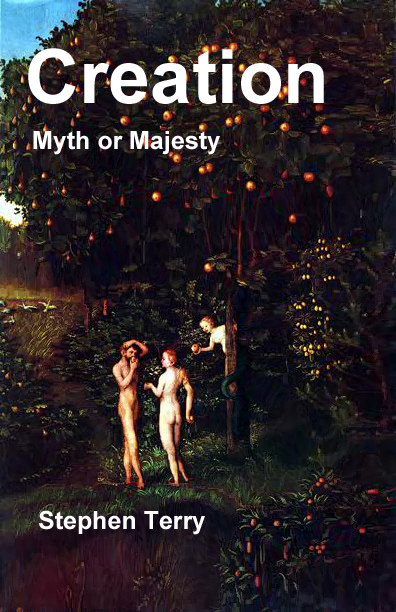
Stephen
Terry, Director

From Battle to Victory
Commentary
for the March 14, 2020 Sabbath School Lesson
 "I looked up and there before me was a man dressed in linen,
with a belt of fine gold from Uphaz around his waist. His body was like topaz,
his face like lightning, his eyes like flaming torches, his arms and legs like
the gleam of burnished bronze, and his voice like the sound of a multitude."
Daniel 10:5-6, NIV
"I looked up and there before me was a man dressed in linen,
with a belt of fine gold from Uphaz around his waist. His body was like topaz,
his face like lightning, his eyes like flaming torches, his arms and legs like
the gleam of burnished bronze, and his voice like the sound of a multitude."
Daniel 10:5-6, NIV
In chapter
10, Daniel encounters a man, apparently in a vision, with a decidedly unusual
appearance. Similarities seem apparent between this individual and Christ in
Revelation, chapter 1, even down to the gold belt or sash both individuals were
wearing. The bright light of the face, the fiery eyes, and the similarity of
the voices[i]
adds further to the temptation to identify this individual as Christ. Some have
said it cannot be Christ because the Prince of Persia withstood him and no one
can withstand Christ. But is this a valid argument? After all, do not sinners
resist him every day? And doesn't Satan resist him to every extent possible? Of
course they do not ultimately prevail, but this does not stop them from
resisting. Some, who equate the archangel Michael with Christ, might offer that
reason for objecting to identifying the unnamed man in this chapter with
Christ, because the man before Daniel reveals that he is not Michael, but
Michael is helping him. Interestingly, although Daniel mentions Michael in recounting
this incident and has previously interacted with Gabriel, he does not even hint
at recognition of this individual which perhaps should give us pause in our
speculations.
Sometimes
it seems there are those among us who purport to have everything regarding
heaven and those who dwell there figured out to minute detail. A beast, a
statue, a scroll all have no mystery for them, They know exactly what each
means and will string together a mountain of proof texts suspended in an
interpretive framework of human devising to tie it all together. Printed on
charts and presented in slides and various other multimedia offerings, it is
all very impressive, until one realizes that if even one tiny link in the chain
falls under suspicion as to its veracity in any way, the entire edifice may
collapse. This may be why denominations so vehemently defend their prophetic
constructs, because they realize this also. Whenever these things are presented
as a matter of faith rather than fact, perhaps we should listen if our senses
begin to tell us otherwise. Many Christians have died through the centuries who were killed by fellow Christians over just such matters
of suspicious but mandated dogma. How many have lost their lives over the doctrine
of transubstantiation? How many over predestination? How many over baptism by
immersion? In view of the light of Christ's incarnate ministry, these quibbles
seem unessential when compared to the parables of Jesus. According to the
Parable of the Sheep and the Goats, salvation is available to those who don't
even perceive Christ's presence in their lives. Maybe the belief that we have
to have everything perfectly understood to be saved is an assumption on our
part. When I see people with Down's syndrome, or I see young people still
trying to figure out this world and how to live in it, I cannot help but see
the problems with such an assumption.
If
we look at the Book of Daniel, we see an attempt in Daniel 8 to harmonize the
Hebrew portion that begins there with the earlier Aramaic chiasm, an attempt
that falls somewhat short, but that attempt was not so much to provide
understanding of that portion of Daniel as it was to provide a transition to
the real focus of the Hebrew segment. That focus is encapsulated in chapters 10
through 12 with the warfare of chapter 11 being central to that message. The
text argues for these chapters having been written at or near the time of the
Maccabees when the rulers and empires mentioned had come and gone and the only
real enemies were the Seleucids to the north, and the ancient sometimes foe, sometimes
friend, Egypt, ruled by the Ptolemies to the south.
Both empires arose after Alexander the Great's untimely death. If we accept
that this segment of the book was to provide justification for the Maccabean
revolt with an implied endorsement of someone of unquestionable religious
devotion and faith in the person of Daniel, it is possible to see that the
identity of the man in chapter 10 is irrelevant beyond implying a heavenly
endorsement of the revolt by prophesying what was taking place under the
Maccabees.
The
story of the Maccabean Revolt is not contained in Protestant Bibles. Perhaps it
should be to help understand the intertestamental period and why things were as
they were for Christ's incarnation. For those who are curious, they can be
found in most Catholic Bibles as the Apocrypha, a word that can be translated
as "hidden or obscure writings." Seventh-day Adventists and other
seventh-day denominations would possibly find the writings troublesome. When
faced with a lost battle and lost lives for refusing to fight on the Sabbath
the Maccabees determined that waging war on the Sabbath was allowed and they
began to achieve victories. (1 Maccabees 2:29-41) However, far from being an
endorsement of general Sabbath breaking, it was seen as recognition of the
importance of defending those who kept Sabbath even if it meant warfare on
Sabbath to do so. Perhaps this policy is why the modern state of Israel
survives, for enemies of the Jews have long used the advent of Jewish holy days
as an opportunity to try to launch surprise attacks against them, such as the
Yom Kippur War of 1973. They have learned by experience that they will not
incur God's wrath for defending themselves on Sabbath or other holy days.
If
we focus on trying to develop a detailed understanding of the identity of the
man in the linen robe, we may stand in danger of missing that this chapter is
merely a transition to chapter 11 and replace the importance of that chapter by
elevating the introduction over the body of this section. Of course the
temptation to do this might be very great because we can see parallels like
those between the individual here and Christ in Revelation, chapter 1, while
the symbolism in chapter 11 is often seen as vague and obscure. Attempts at
deciphering Daniel have often made that abundantly clear with detailed interpretations
of Daniel for chapters 10 and 12, but glossed over opinions being offered for
chapter 11. This may be because while the vagueness of the symbology
allows a wide latitude for interpretation, it also
prevents a substantive challenge to interpretations that may appear specious,
driven only by a denomination's own apocalyptic perspective. In other words,
the parties involved in chapter 11, have enough malleability in them to be
shaped to whatever conflict one sees as relevant. Depending on when one lives
and who is fighting, any conflict becomes apocalyptic fodder for proclamation of
the End Times. This may also reveal the likelihood that this portion of Daniel
was written as spiritual justification for the Maccabees. For it is remarkably suitable
to justify most other conflicts as apocalyptically essential as well,
especially those waged from a religious or moral foundation.
All
that being said, perhaps we can let the man in chapter 10 simply be a heavenly
being as the writer of the chapter envisioned how one should look. The identity
was not as important as the idea of a heavenly endorsement. A little name
dropping as in the mention of Michael could have been just some extra frosting on
the cake. This being knows Michael, and since Michael is the archangel, it
lends power to this being's statements as arguments from implied authority and
not simply his own ideas. At a time when the Jewish faith was under assault and
that faith could be a unifying force to resist invasion by the Seleucids, an
appeal to heavenly authority could be the difference between a successful revolt
and disorganized uprisings destined to fall apart when seriously challenged. For
this among other reasons, the revolt did not fail. One of its successes is why
the Jews celebrate Hanukkah today. It also set in motion the events that would
set Herod the Great on the throne in Jerusalem and that would bring Roman
occupation of Palestine. These events were crucial to the course of Jesus' life
even though the idea of an imminent messianic incarnation may have been far from
the mind of the writer. But then who is to say where the line between inspired
prophecy and historical prose should be drawn. Does the inspiration exist in
the writer or does it instead exist in later interpretations that may have
nothing to do with the writer's intent? Perhaps that is a question of faith only
our own hearts can answer.
